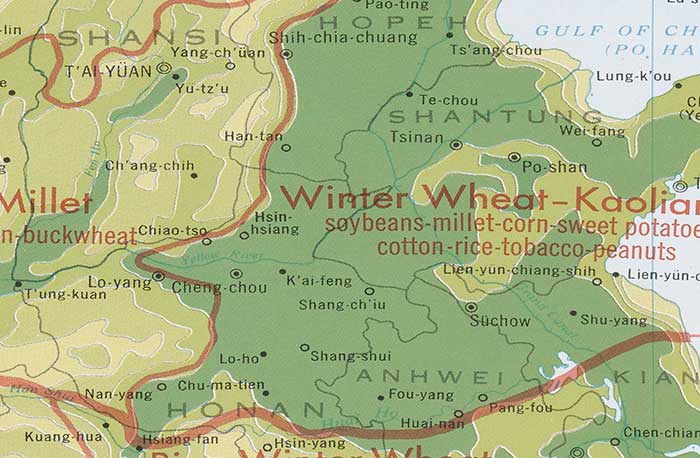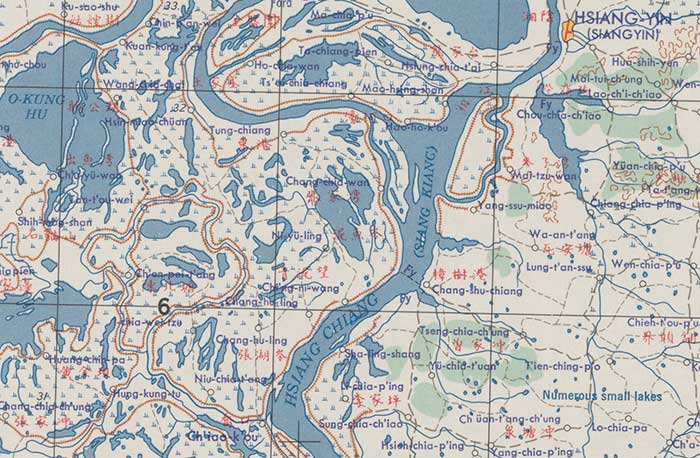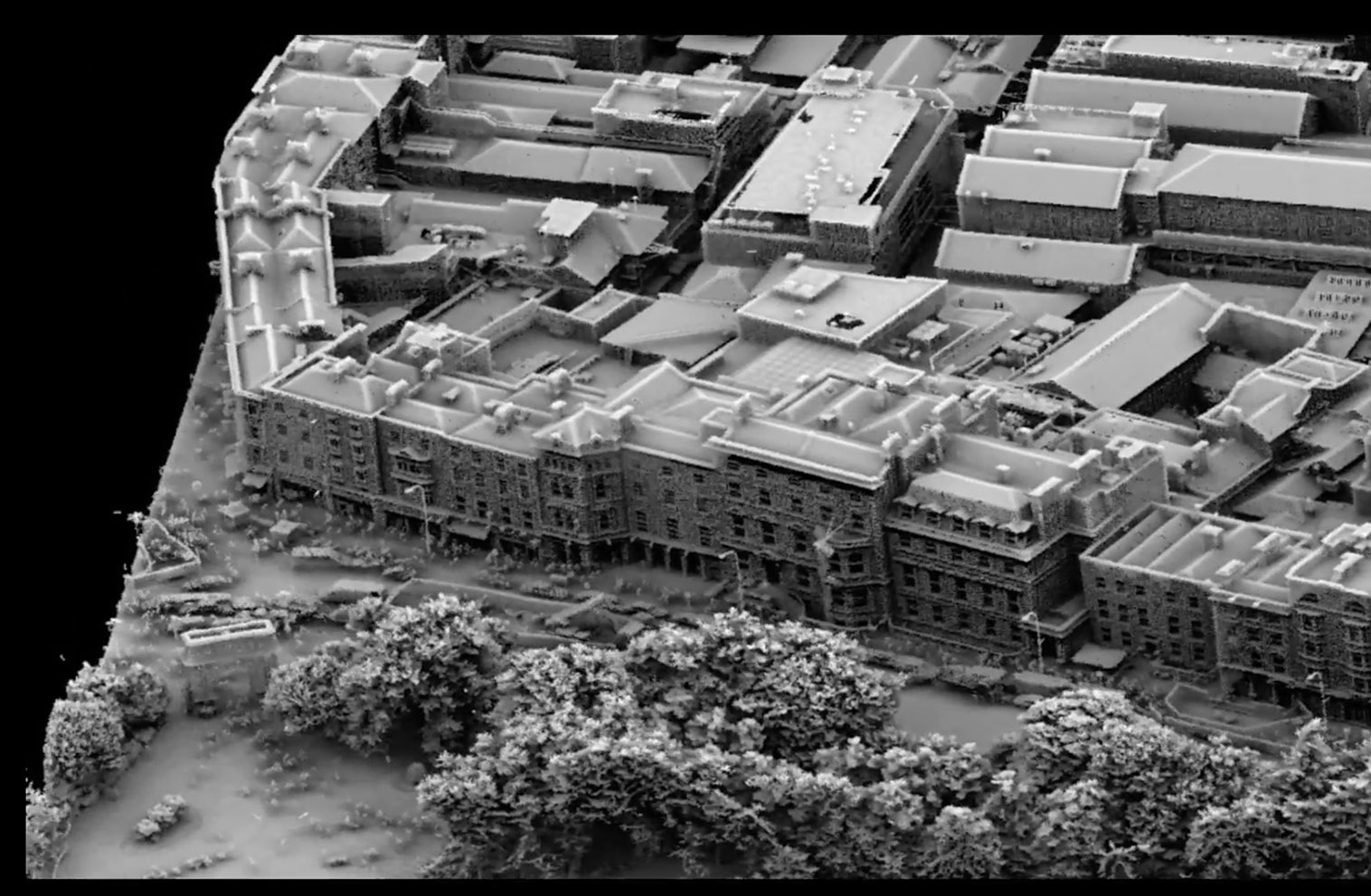View Metadata
DCW Aeronautical Facilities, Points
- Identification Information
- Data Quality Information
- Spatial Data Organization Information
- Spatial Reference Information
- Entity and Attribute Information
- Distribution Information
- Metadata Reference Information
- Identification Information
- Citation
- Originator
- National Imagery and Mapping Agency (now National Geospatial-Intelligence Agency)
- Publication Date
- 19920701
- Title
- DCW Aeronautical Facilities, Points
- Edition
- First
- Geospatial Data Presentation Form
- vector digital data
- Publication Information
- Publication Place
- Fairfax, VA
- Publisher
- National Imagery and Mapping Agency
- Online Linkage
- https://hgl.harvard.edu/catalog/harvard-dcw-ae-point
- Abstract
- This datalayer is a point coverage representing aeronautical facilities located throughout DCW (Digital Chart of the World) geographic coverage as of 1992. This layer was derived from the VMAP0 series produced by the National Geospatial-Intelligence Agency (NGA), formerly known as NIMA (National Imagery and Mapping Agency), an agency of the United States government. VMAP data set products use the "vector product format" (vpf). The term "VMap" is derived from "Vector Smart Map." Digital Chart of the World is a comprehensive 1:1,000,000 scale vector basemap of the world. It consists of cartographic, attribute, and textual data. The primary source for the database is the National Imagery and Mapping Agency's (NIMA) Operational Navigation Chart (ONC) series. This is the largest scale unclassified map series in existence that provides consistent, continuous global coverage of essential basemap features. The coverage is is organized into 10 thematic layers which feature a vast number of files organized into libraries. These libraries, or coverages, are geographicially bounded areas, rather than feature-linked coverages. DCW Layers in the Harvard Geospatial Library are feature-based as we have processed the multiple tiles from the VMAP0 libraries into a series of seamless coverages (e.g. aeronautical features appear in a single layer, "Aeronautical Facilities, Points") which depict a particular feature as it occurs throughout the available geographic coverage areas. Since different geographic areas were mapped by NIMA at different times using various types of feature capture and scanning and digitizing methods and software, multiple map sources of varying dates and multiple processing approaches are represented in each of these HGL layers. We have necessarily generalized the discussion of data source material and process steps in the Data Quality section of this metadata document.
- Purpose
- The Digital Chart of the World is a general purpose global database designed to support Geographic Information Systems applications. This layer is intended for researchers, students, and policy makers for reference and mapping purposes, and may be used for basic applications such as viewing, querying, and map output production. This layer will provide a basemap for layers related to socio-economic and political anaylsis, statistical enumeration and analysis, or to support graphical overlays and analysis with other spatial data. More advanced user applications may focus on demographics, urban and rural land use planning and related areas including defining boundaries, managing assets and facilities, integrating attribute databases with geographic features, spatial analysis, and presentation output.
- Supplemental Information
- Entities (features) and Attributes for DCW are fully described in: Department of Defense, 1992, Military Specification Digital Chart of the World (MIL-D-89009): Philadelphia, Department of Defense, Defense Printing Service Detachment Office. The DCW used a product-specific attribute coding system that is composed of TYPE and STATUS designators for area, line, and point features; and LEVEL and SYMBOL designators for text features. The TYPE attribute specifies what the feature is, while the STATUS attribute specifies the current condition of the feature. Some features require both a TYPE and STATUS code to uniquely identify their characteristics. In order to uniquely identify each geographic attribute in the DCW, the TYPE and STATUS attribute code names are preceded by the two letter coverage abbreviation and a two letter abbreviation for the type of graphic primitive present. The DCW Type/Status codes were mapped into the Feature Attribute Coding Catalogue (FACC) coding scheme. A full description of FACC may be found in The DIgital Geographic Information Exchange STandard (DIGEST) Edition 1.2, January 1994. Please consult the DIGEST FACC website for complete coding data. (http://www.digest.org/html/DIGEST_2-1_Part4_AnnexB.pdf)
- Temporal Extent
- Currentness Reference
- publication date
- Time Instant
- 19920701
- Bounding Box
- West
- -179.304504
- East
- 179.279205
- North
- 81.158279
- South
- -54.917198
- ISO Topic Category
- transportation
- Theme Keyword
- Airports
- Transportation
- Theme Keyword Thesaurus
- LCSH
- Place Keyword
- Northern Hemisphere
- Southern Hemisphere
- Eastern Hemisphere
- Western Hemisphere
- Africa
- Asia
- Australia
- Europe
- North America
- South America
- Polar regions
- Place Keyword Thesaurus
- LCSH
- Temporal Keyword
- Access Restrictions
- None
- Use Restrictions
- For educational, non-commercial use only. Although this data set has been developed by the NGA no warranty expressed or implied is made by them as to the accuracy of the data and related materials. The act of distribution shall not constitute any such warranty, and no responsibility is assumed by the NGA in the use of this data, or related materials.
- Status
- Complete
- Maintenance and Update Frequency
- Biennial
- Point of Contact
- Contact Organization
- National Geospatial-Intelligence Agency
- Delivery Point
- Office of Corporate Relations
- Delivery Point
- Public Affairs Division, MS D-54
- Delivery Point
- 4600 Sangamore Road
- City
- Bethesda
- State
- MD
- Postal Code
- 20816-5003
- Country
- USA
- Contact Telephone
- 800-455-0899
- Hours of Service
- Monday through Friday 9:00 A.M. to 4:00 P.M. EST-USA
- Credit
- National Imagery and Mapping Agency (now known as National Geospatial-Intelligence Agency).
- Native Data Set Environment
- Microsoft Windows 2000 Version 5.0 (Build 2195) Service Pack 4; ESRI ArcCatalog 9.0.0.535
- Data Quality Information
- Attribute Accuracy Report
- 100 percent of attribute codes were reviewed against the source manuscripts. No formal effort was undertaken to develop a quantitative attribute accuracy statement.
- Logical Consistency Report
- All data were found to be topologically correct. No duplicate features are present. All areas are completely described as depicted on the source manuscripts. No undershoots or overshoots are present. All data were consistently captured using the rules described in the narrative associated with the Data Quality Table and in the various feature table narrative files present at the coverage level within the library. Special automation techniques Points were derived from Defense Mapping Agency (DMA) DAFIF files, with the exception of airport locations within the borders of the former Warsaw Pact nations and other communist countries, including the People's Republic of China, North Korea, Vietnam, and Albania. In the former case, DAFIF point locations were loaded into ARC/INFO, reformatted into a compatible file structure, and converted into ARC/INFO coverages using the ARC GENERATE command. Applicable attributes were initially maintained in a related file, and later joined to the feature attribute table. In the latter case, the information was derived from paper lithographic sources. Data captured from lithographs were recompiled onto a stable Mylar base, using local registration techniques over 1-degree areas. In this approach, 1-degree graticules were used to establish a network of local control, minimizing the effects of the unstable paper media to areas of this size. In extreme northern and southern latitudes (above approximately 70 degrees north or south), a local registration interval of 2 degrees was used. Following recompilation, the locations were manually digitized. Feature coincidence AE point locations do not have explicit coincidence with other features in the database. Database design issues Data derived from lithographic sources have an attribute of AEPTTYPE = 5. DAFIF-derived data have more available attributes than those derived from lithographic sources, which contain null values in the AEPTICAO and AEPTDKEY attribute fields.
- Completeness Report
- 100 percent of features depicted on the ONC source materials have been captured. 100 percent of the features have valid attribute codes assigned to them. Airport features were derived from the DMA Digital Aeronautical Flight Information File (DAFIF). Where DAFIF was incomplete, locations were added from the ONC.
- Horizontal Positional Accuracy Report
- The Horizontal Positional Accuracy Value represents overall accuracy. Source chart-specific accuracies are available as area feature attributes in the VMap-0 data quality coverage. The primary accuracy analysis was performed on one chart only in the prototyping phase of the DCW project. Horizontal Positional Accuracy is expressed in meters. Detailed horizontal accuracy figures were developed by comparing the positions of well-defined points in the roads, railroads, utility lines, and drainage coverages against sources of higher accuracy, measuring the offsets, and expressing differences as a Circular Map Accuracy figure at a 90% confidence interval. This figure was independently verified by adding known production errors to source chart accuracies in a root sum square calculation.
- Quantitative Horizontal Positional Accuracy Assessment
- Lineage
- Source
- Originator
- National Imagery and Mapping Agency
- Publication Date
- 1974-1992
- Title
- Operational Navigational Chart (ONC)
- Geospatial Data Presentation Form
- map
- Publication Information
- Source Scale Denominator
- 1000000
- Type of Source Media
- stable-base material
- Source Temporal Extent
- Time Period Information
- Range of Dates/Times
- Beginning Date
- 1974
- Ending Date
- 1992
- Source Currentness Reference
- ground condition
- Contribution
- All information found on the source with the exception of aeronautical data. The U.S. Defense Mapping Agency Operational Navigation Chart (ONC) series and the Jet Navigation Charts (JNCs) for the region of Antarctica were the primary sources for the Digital Chart of the World database. The ONCs have a scale of 1:1,000,000, and they are the largest scale, unclassified map series produced by the DMA that provides consistent, continuous global coverage of essential basemap features. Some collateral sources have been used to enhance road and railroad connectivity through selected urbanized areas. The DMA's Digital Aeronautical Flight Information File (DAFIF) was the primary source for the airport data in the aeronautical layer. An Advanced Very High Resolution Radiometer (AVHRR) image for the coterminous United States is the source for the data in the Vegetation layer. The Defense Intelligence Agency Manual (DIAM) 65-18 is the source for the Geopolitical codes and the ocean boundaries information contained in the Political and Oceans layer. The product specifications for the ONCs and JNCs have been used extensively in the design of the database.
- Source
- Originator
- National Imagery and Mapping Agency
- Publication Date
- 199006
- Title
- Digital Aeronautical Flight Information File
- Publication Information
- Type of Source Media
- magnetic tape
- Source Temporal Extent
- Time Period Information
- Single Date/Time
- Calendar Date
- 1990
- Source Currentness Reference
- publication date
- Contribution
- Airport records (name, International Civil Aviation Organization, position, elevation, and type)
- Source
- Originator
- Defense Mapping Agency
- Publication Date
- 1990
- Title
- Jet Navigational Chart
- Geospatial Data Presentation Form
- map
- Publication Information
- Source Scale Denominator
- 2000000
- Type of Source Media
- stable-base material
- Source Temporal Extent
- Time Period Information
- Range of Dates/Times
- Beginning Date
- 1974
- Ending Date
- 1991
- Source Currentness Reference
- publication date
- Source
- Originator
- USGS EROS Data Center
- Title
- Advance Very High Resolution Radiometer
- Geospatial Data Presentation Form
- remote-sensing image
- Publication Information
- Source Scale Denominator
- 1000000
- Type of Source Media
- magnetic tape
- Source Temporal Extent
- Time Period Information
- Range of Dates/Times
- Beginning Date
- 199003
- Ending Date
- 199011
- Source Currentness Reference
- publication date
- Spatial Data Organization Information
- Direct Spatial Reference Method
- Vector
- Point and Vector Object Information
- SDTS Terms Description
- SDTS Point and Vector Object Type
- Entity point
- Point and Vector Object Count
- 13078
- Spatial Reference Information
- Horizontal Coordinate System Definition
- Geographic
- Latitude Resolution
- 0.000001
- Longitude Resolution
- 0.000001
- Geographic Coordinate Units
- Decimal degrees
- Geodetic Model
- Horizontal Datum Name
- D_WGS_1984
- Ellipsoid Name
- WGS_1984
- Semi-major Axis
- 6378137.000000
- Denominator of Flattening Ratio
- 298.257224
- Vertical Coordinate System Definition
- Altitude System Definition
- Altitude Datum Name
- Mean Sea Level
- Altitude Resolution
- 1.000000
- Altitude Distance Units
- 1.0
- Altitude Encoding Method
- Explicit elevation coordinate included with horizontal coordinates
- Entity and Attribute Information
- Entity Type
- Entity Type Label
- DCW Aeronautical Facilities, Points
- Entity Type Definition
- Airport point features with associated attribute data
- Entity Type Definition Source
- NIMA
- Attributes
- AE_
- Internal feature number. (Sequential unique whole numbers that are automatically generated.)
- Definition Source
- ESRI
- AE_ID
- Feature Identifier (Sequential unique whole numbers that are automatically generated.)
- Definition Source
- ESRI
- PFT_ID
- Feature Identifier.
- Definition Source
- ESRI
- AEPTTYPE
- Aeronautical Facility Type
- 1
- Active civil
- 2
- Active civil and military
- 3
- Active military
- 4
- Other
- 5
- Airport location added from ONC source when not available in the DAFIF
- Definition Source
- NIMA
- Attribute Value Accuracy
- Airport features in Codes 1 through 4 were derived from the DMA Digital Aeronautical Flight Information File (DAFIF). Where this file was incomplete, data were added from the ONCs (primarily in Eastern Europe and the former Soviet Union).
- AEPTNAME
- Aeronautical Facility Name (Airport Name)
- Definition Source
- NIMA
- AEPTVAL
- Aeronautical point elevation value
- Definition Source
- NIMA
- Attribute Value Accuracy
- Elevation of the point in feet above MSL. The code 99999 indicates that no elevation data are present on the lithograph.
- AEPTICAO
- Aeronautical point International Civil Aviation Organization code (Airport Name)
- Definition Source
- NIMA
- Attribute Value Accuracy
- 4 character alphnumeric code. Left blank for AEPTTYPE code 5
- AEPTDKEY
- Aeronautical point DAFIF reference number
- Definition Source
- NIMA
- Attribute Value Accuracy
- 7 character alphnumeric code representing the DAFIF reference number. Blank for features with AEPTTYPE code 5
- TILE_ID
- VPF Format Tile Identifier Code
- Definition Source
- NIMA
- END_ID
- Primitive Record Identifier for the Feature (Elevation of the point in feet above MSL. 99999 represents no data.)
- Definition Source
- Assigned
- SHAPE
- Feature geometry. (Coordinates defining the features.)
- Definition Source
- ESRI
- SHAPE.FID
- Internal feature number. (Sequential unique whole numbers that are automatically generated.)
- Definition Source
- ESRI
- Distribution Information
- Format Name
- Shape
- Distributor
- Harvard Geospatial Library
- Name
- Metadata Reference Information
- Metadata Date
- 20041213
- Metadata Contact
- Contact Information
- Contact Organization Primary
- Contact Organization
- Harvard Geospatial Library
- Contact Person
- Geospatial Resources Cataloger
- Contact Address
- Address
- Harvard University Library
- Address
- Office For Information Systems
- Address
- 1280 Massachusetts Avenue
- City
- Cambridge
- State or Province
- MA
- Postal Code
- 02138
- Country
- USA
- Contact Voice Telephone
- 617-495-2417
- Contact Facsimile Telephone
- 617-496-0440
- Contact Electronic Mail Address
- hgl_ref@hulmail.harvard.edu
- Hours of Service
- Monday - Friday, 9:00 am - 4:00 pm EST-USA
- Metadata Standard Name
- FGDC Content Standards for Digital Geospatial Metadata
- Metadata Standard Version
- FGDC-STD-001-1998
- Metadata Extensions
- Online Linkage
- http://www.esri.com/metadata/esriprof80.html
- Profile Name
- ESRI Metadata Profile


